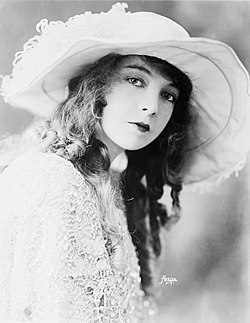Portal:1920s
The 1920s Portal
Silent films were popular in this decade, with the highest-grossing film of this decade being either the American silent epic adventure-drama film Ben-Hur: A Tale of the Christ or the American silent war drama film The Big Parade, depending on the metrics used. Sinclair Lewis was a popular author in the United States in the 1920s, with his books Main Street and Elmer Gantry becoming best-sellers. Best-selling books outside the US included the Czech book The Good Soldier Švejk, which sold 20 million copies. Songs of this decade included "Mack the Knife" and "Tiptoe Through the Tulips". During the 1920s, the world population increased from 1.87 to 2.05 billion, with approximately 700 million births and 525 million deaths in total. (Full article...) Selected article -The Golden Twenties was a particular vibrant period in the history of Berlin. After the Greater Berlin Act, the city became the third largest municipality in the world and experienced its heyday as a major world city. It was known for its leadership roles in science, the humanities, art, music, film, architecture, higher education, government, diplomacy and industries. (Full article...) Featured picture A portrait of Lillian Gish from 1921. Gish was one of the first female movie stars, called "The First Lady of American Cinema", starting in 1912 and continuing to appear in films until 1987. The American Film Institute named Gish 17th among the greatest female stars of all time and awarded her a Life Achievement Award, making her the only recipient who was a major figure in the silent era. Remarkably, she never won an Academy Award for her work, although she did receive a Special Academy Award in 1971. Did you know...
Related portalsSelected biography -Louis Daniel Armstrong (August 4, 1901 – July 6, 1971), nicknamed "Satchmo", "Satch", and "Pops", was an American jazz and blues trumpeter and vocalist. He was among the most influential figures in jazz. His career spanned five decades and several eras in the history of jazz. Armstrong received numerous accolades including the Grammy Award for Best Male Vocal Performance for Hello, Dolly! in 1965, as well as a posthumous win for the Grammy Lifetime Achievement Award in 1972. His influence crossed musical genres, with inductions into the DownBeat Jazz Hall of Fame, the Rock and Roll Hall of Fame, and the National Rhythm & Blues Hall of Fame, among others. Armstrong was born and raised in New Orleans. Coming to prominence in the 1920s as an inventive trumpet and cornet player, he was a foundational influence in jazz, shifting the focus of the music from collective improvisation to solo performance. Around 1922, Armstrong followed his mentor, Joe "King" Oliver, to Chicago to play in Oliver's Creole Jazz Band. Armstrong earned a reputation at "cutting contests", and his fame reached band leader Fletcher Henderson. Armstrong moved to New York City, where he became a featured and musically influential band soloist and recording artist. By the 1950s, Armstrong was an international musical icon, appearing regularly in radio and television broadcasts and on film. Apart from his music, he was also beloved as an entertainer, often joking with the audience and keeping a joyful public image at all times. (Full article...) TopicsWikiProjects
List articlesMore Did you know (auto generated)
CategoriesGeneral imagesThe following are images from various 1920s-related articles on Wikipedia.
Recognized content
Associated WikimediaThe following Wikimedia Foundation sister projects provide more on this subject:
Discover Wikipedia using portals |














































